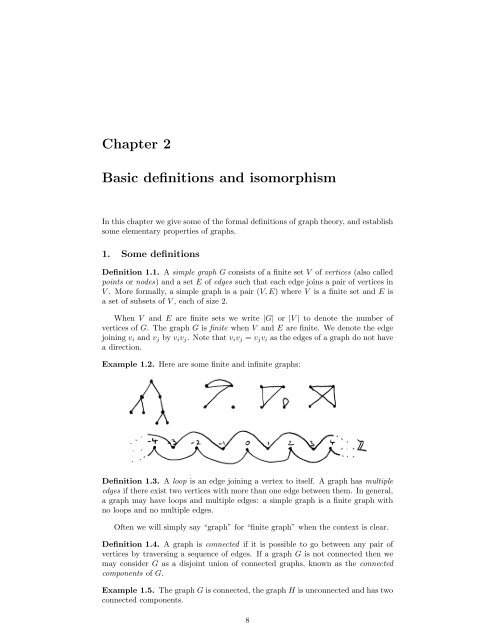You also want an ePaper? Increase the reach of your titles
YUMPU automatically turns print PDFs into web optimized ePapers that Google loves.
Chapter 2Basic definitions and isomorphismIn this chapter we give some of the formal definitions of graph theory, and establishsome elementary properties of graphs.1. Some definitionsDefinition 1.1. A simple graph G consists of a finite set V of vertices (also calledpoints or nodes) and a set E of edges such that each edge joins a pair of vertices inV . More formally, a simple graph is a pair (V, E) where V is a finite set and E isa set of subsets of V , each of size 2.When V and E are finite sets we write |G| or |V | to denote the number ofvertices of G. The graph G is finite when V and E are finite. We denote the edgejoining v i and v j by v i v j . Note that v i v j = v j v i as the edges of a graph do not havea direction.Example 1.2. Here are some finite and infinite graphs:Definition 1.3. A loop is an edge joining a vertex to itself. A graph has multipleedges if there exist two vertices with more than one edge between them. In general,a graph may have loops and multiple edges: a simple graph is a finite graph withno loops and no multiple edges.Often we will simply say “graph” for “finite graph” when the context is clear.Definition 1.4. A graph is connected if it is possible to go between any pair ofvertices by traversing a sequence of edges. If a graph G is not connected then wemay consider G as a disjoint union of connected graphs, known as the connectedcomponents of G.Example 1.5. The graph G is connected, the graph H is unconnected and has twoconnected components.8













